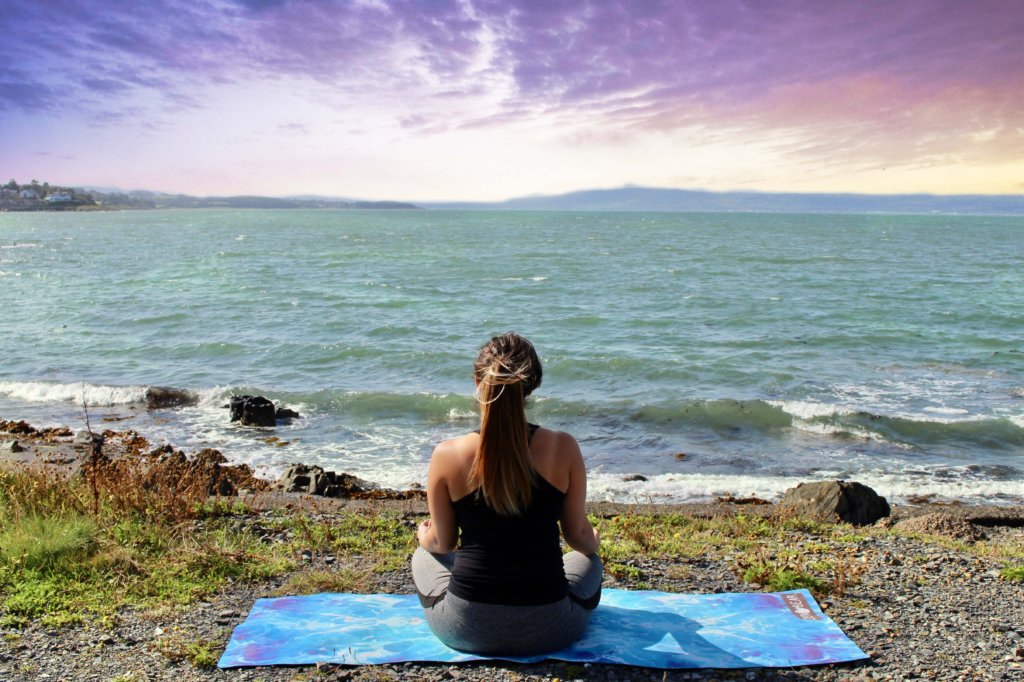
Yoga has been growing in popularity over the past few decades and now it is a firm favourite wellness practice for many people of all ages. As well as boasting benefits in supporting our long-term mental and physical health, yoga can also be used as a tool to aid issues such as back pain.
A recent review of research studies revealed that there is evidence yoga can help improve function and relieve pain associated with chronic lower back problems. Because Yoga is a mind-body therapy, it is a useful tool that can be used to strengthen and stretch the body but also deal with the stress that accompanies chronic pain.
Strength
During a yoga session, you are encouraged to hold poses or Asanas. Holding these asanas for a length of time requires concentration and often targets several muscles specifically. By maintaining and repeating these, you improve your muscle strength and balance. Many of the postures gently strengthen the muscles of the back and core. These muscles are integral components of the spine’s own muscular network which helps you to maintain good posture and movement as well as reducing discomfort.
Emotional tension
Back pain if often closely related to the holding of emotional tension. Whether it’s an unexpected bill in the post, a delayed train or a family issue; stress and emotional worries create tension in the body which then can lead to injury or muscle spasm. By relaxing the mind and body through breathing techniques, referred to as Pranayama, the body is able to repair or even prevent further health issues.
Yoga Nidra is a more meditative practice and using guided videos or playlists can support healing during these times. You can find these on Spotify, iTunes or YouTube where instructors such as Rod Stryker and Uma Dinsmore-Tuli are popular.
Stretch
An important aspect of Yoga incorporates stretching and relaxation, which reduces tension in stress-carrying muscles. Whilst most yoga classes hold poses that stretch out muscle groups for 10-60 seconds, Yin Yoga is known for holding poses for up to 5 minutes as a restorative practice for the body. In these slow held poses, practitioners are encouraged to soften the muscles as much as possible so they can access the deeper connective tissues, ligaments and fascia. Paired with the mindfulness meditation this helps to calm the mind and aids the healing process immensely.
Body Awareness
The more yoga you practice, the more awareness you have of your body and it’s needs. Yoga teachers encourage their students to move within their own comfort zones and respect their limitations without judgement. Understanding when to gently push and limber the body and when to hold back is a great preventative measure that can be used in daily life.
How to start
‘At-home-yoga’ is accessible to everyone with a phone, laptop or smart TV. YouTube stars such as Yoga with Adriene, Body Positive Yoga or Tim Sensei are instructors well-loved across the globe by yogis of all ages, sizes and abilities. Choose or create a quiet, uncluttered space in your home for your practice. The space doesn’t have to be large, but it should be quiet and peaceful.
Although not completely essential, you may want to get yourself a yoga mat for a better experience. However other pieces of equipment aren’t usually required, as you can often use blankets, towels and pillows as substitutes.
Set yourself realistic goals, starting out with small pockets of time (15-20 minutes) and begin with basic beginner’s yoga sequences and expand your practice as your skills improve.






